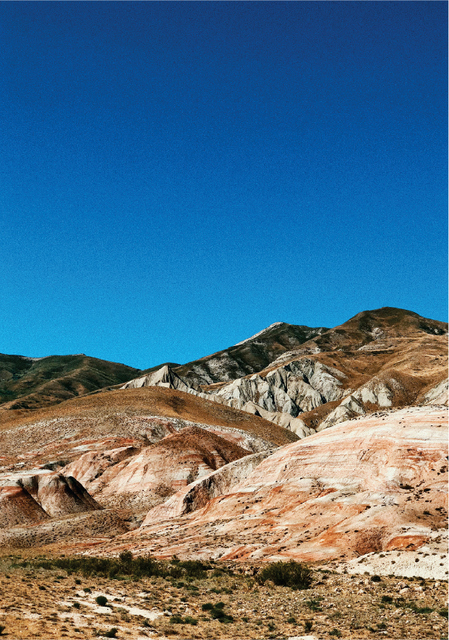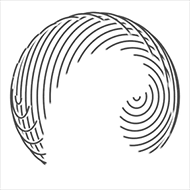TRAVELLING EXHIBITION: ONCE AGAIN THAT GARDEN BE KHACHMAZ REGION
05 Mar - 27 Nov 20
YARAT Contemporary Art Space presents “Yenə o bağ olaydı” (“Once Again That Garden Be”) travelling exhibition in Khachmaz region with works by Aghababa Bagirov, Etibar Ismayilov, Gunay Aliyeva, Mousa Beyzade, Nazrin Mammadova, Vusala Agharaziyeva and Leyli Gafarova.
YARAT Contemporary Art Space presents Once Again That Garden Be travelling exhibition with works by renowned Italian artist Michelangelo Pistoletto and emerging local artists. The exhibition is the result of a workshop given by CITTADELLARTE Fondazione Pistoletto (Biella Italy) director Paolo Naldini discussing the theory of the “Third Paradise” developed by Michelangelo Pistoletto. The theory wants to overcome the current worldwide existing conflict between the two polarities of nature and artifice, it aims to create a new humanity with a responsibility for the own environment in harmony between technology and nature.
The Azeri word “Bağ” originates in the Persian word Bāgh (Persian: The Azeri word “Bağ” originates in the Persian word Bāgh (Persian: باغ) which refers to an enclosed cultivated area excluding wildness of nature providing privacy and security. The exhibition title is inspired by one of the most popular poems by Mikayil Mushfig talking about the garden as a desirable, nostalgic space of love, peace, freedom and happiness. The exhibition becomes a space for exploration, imagination and self-as well as social reflection, featuring works by the renowned Italian artist Michelangelo Pistoletto and by emerging Azeri artists with their visions of the paradise and harmony between technology, nature and humanity.
The exhibition includes Michelangelo Pistoletto’s labyrinth leading through a maze in search of the own self, represented in the installation with the mirror pond. The form of a labyrinth has long been used as a metaphor for discovery and personal journey.
For this edition the artist Aghababa Bagirov created the augmented reality work “Transition” that shows the story of the oil lamp when scanning the “Third Paradise” sign. The oil lamp has been often used in the regions to compensate electricity cuts. The artist takes this story as a starting point for the depiction of generation conflicts when technological progress happens too quickly and without taking social circumstances into account.
In the back part of the exhibition space the visitor finds himself amidst further work of young Azerbaijan artists and their interpretation of the Third Paradise.
Etibar Ismayilov created a wishing well with an instruction in encrypted language how to use it. The text methods refer to the fascinating capacity of human’s brain and embodies the artist’s encouragement to continue believing in the impossible.
Gunay Aliyeva's work looks at an artist’s life in the form of a receipt inspired by the words of Joseph Brodsky “our products speak about us rather than our confessions”.
Mousa Beyzade paper cuts approach the idea of the “Third Paradise” by showing how health technology has become an integral part of humanity. The work explores the fine line between the necessary compensation of health problems and the risk of the attempt of an unlimited idealization of man.
Timely, interdisciplinary, simultaneously Nazrin Mammadova’s work exists at the intersection of technology, design and nature. Pre-recorded sound ambiences were put back in their original surrounding, re-echoing and resonating with the mountains, re-creating a dense sound impression with multi-layered textures, rhythms and frequencies.
Vusala Agharaziyeva’s work presents the importance of a reasonable relationship towards high-tech features that on one hand make our life more convenient, on the other hand constitute a danger of exploiting nature. Her balance visualizes this concept consisting on one side of micro electronic devices in one scale-pan and soil on the other.
Leyli Gafarova’s multimedia project “Ghilman” (Farsi: paradisiacal, beautiful, young beardless males) refers to the theory of Dutch philosopher Michiel Leenzberg who talks about the “silent power” of the Islamic world not represented as active, political or revolutionary violent but the contrary: by its mystery, reserveness, passiveness and tolerance.
The exhibition is accompanied by a video screening program with works by Ruslan Abbasov, Gunel Akhundlu, Rena Bashirova, Timo Herbst, Orkhan Huseynov, Merzedes Sturm-Lie, Farid Rasulov.
YARAT in cooperation with Nargis Magazine Recycle Project 2019 presents a public art program that features Rashad Alakberov’s installation “Reuse, Reduce, Recycle” within the frame of the travelling exhibition.
The exhibition is being implemented jointly with the support of Khachmaz City Executive Power and Khachmaz State Gallery under the Ministry of Culture.
Exhibition dates: 5 March – 27 November, 2020
Opening date: 5 March, 2020
Opening time: 3 pm
Admission is free
Venue: Khachmaz State Gallery
Address: 2 Heydar Aliyev avenue, Park of Cultural Figures, Khachmaz
Exhibition opening hours: Monday – Friday: 9:00 – 18:00, Saturday: 9:00 – 15:00
For press information and images please contact:
Hokuma Karimova
T.: +994 50 274 67 44
E.: hokuma.k@yarat.az









